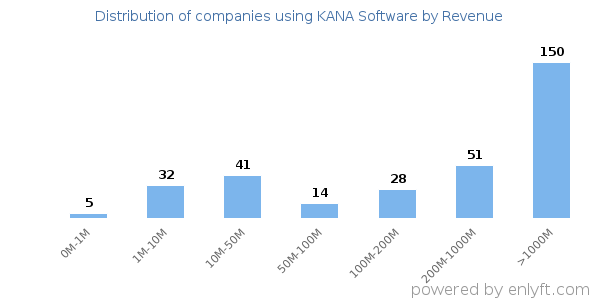Companies using KANA Software
We have data on 275 companies that use KANA Software. The companies using KANA Software are most often found in United States and in the Government Administration industry. KANA Software is most often used by companies with >10000 employees and >1000M dollars in revenue. Our data for KANA Software usage goes back as far as 7 years and 7 months.
If you’re interested in the companies that use KANA Software, you may want to check out Salesforce.com CRM and Zoho CRM as well.
Who uses KANA Software?
| Company | Accenture PLC |
| Website | accenture.com |
| Country | Ireland |
| Revenue | >1000M |
| Company Size | >10000 |
| Company | Cognizant Technology Solutions Corp |
| Website | cognizant.com |
| Country | United States |
| Revenue | >1000M |
| Company Size | >10000 |
| Company | Infosys Ltd |
| Website | infosys.com |
| Country | India |
| Revenue | >1000M |
| Company Size | >10000 |
| Company | HP Development Company, L.P. |
| Website | hp.com |
| Country | United States |
| Revenue | >1000M |
| Company Size | >10000 |
| Company | Fujitsu Ltd |
| Website | fujitsu.com |
| Country | Japan |
| Revenue | >1000M |
| Company Size | >10000 |
| Company | Website | Country | Revenue | Company Size |
|---|---|---|---|---|
| Accenture PLC | accenture.com | Ireland | >1000M | >10000 |
| Cognizant Technology Solutions Corp | cognizant.com | United States | >1000M | >10000 |
| Infosys Ltd | infosys.com | India | >1000M | >10000 |
| HP Development Company, L.P. | hp.com | United States | >1000M | >10000 |
| Fujitsu Ltd | fujitsu.com | Japan | >1000M | >10000 |
Target KANA Software customers to accomplish your sales and marketing goals.
KANA Software Market Share and Competitors in Customer Relationship Management (CRM)
We use the best indexing techniques combined with advanced data science to monitor the market share of over 15,000 technology products, including Customer Relationship Management (CRM). By scanning billions of public documents, we are able to collect deep insights on every company, with over 100 data fields per company at an average. In the Customer Relationship Management (CRM) category, KANA Software has a market share of about 0.1%. Other major and competing products in this category include:
Customer Relationship Management (CRM)
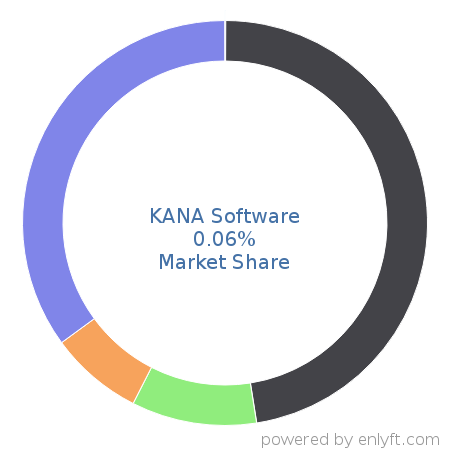

What is KANA Software?
KANA Software, Inc. is a wholly owned subsidiary of Verint Systems (NASDAQ: VRNT) and provides on-premises and cloud computing hosted customer engagement optimization (CEO) products to many of the Fortune 500, mid-market businesses and government agencies.
Top Industries that use KANA Software
Looking at KANA Software customers by industry, we find that Government Administration (18%), Information Technology and Services (11%), Telecommunications (7%), Computer Software (7%) and Financial Services (6%) are the largest segments.
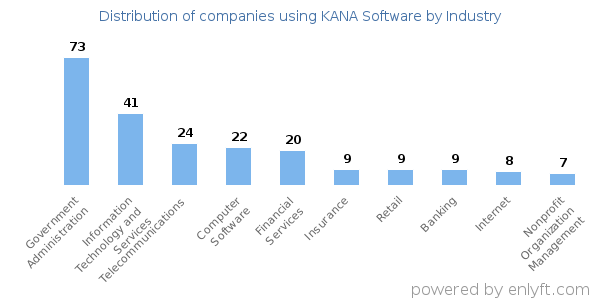
Top Countries that use KANA Software
50% of KANA Software customers are in United States and 27% are in United Kingdom.
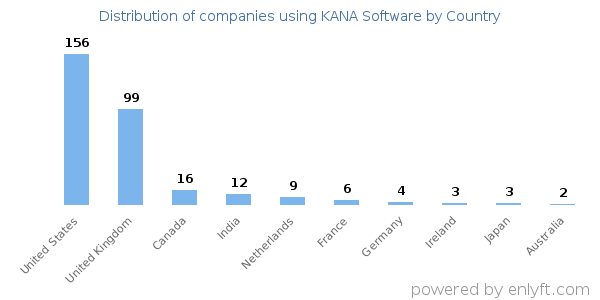
Distribution of companies that use KANA Software based on company size (Employees)
Of all the customers that are using KANA Software, a majority (63%) are large (>1000 employees), 12% are small (<50 employees) and 23% are medium-sized.
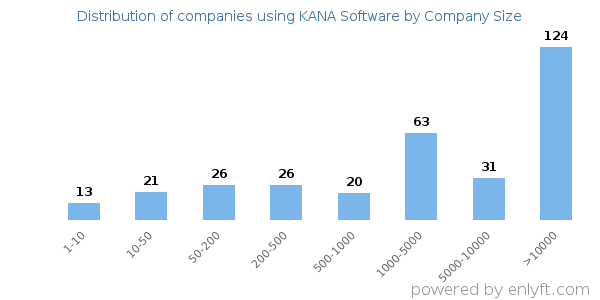
Distribution of companies that use KANA Software based on company size (Revenue)
Of all the customers that are using KANA Software, a majority (59%) are large (>$1000M), 22% are small (<$50M) and 14% are medium-sized.
